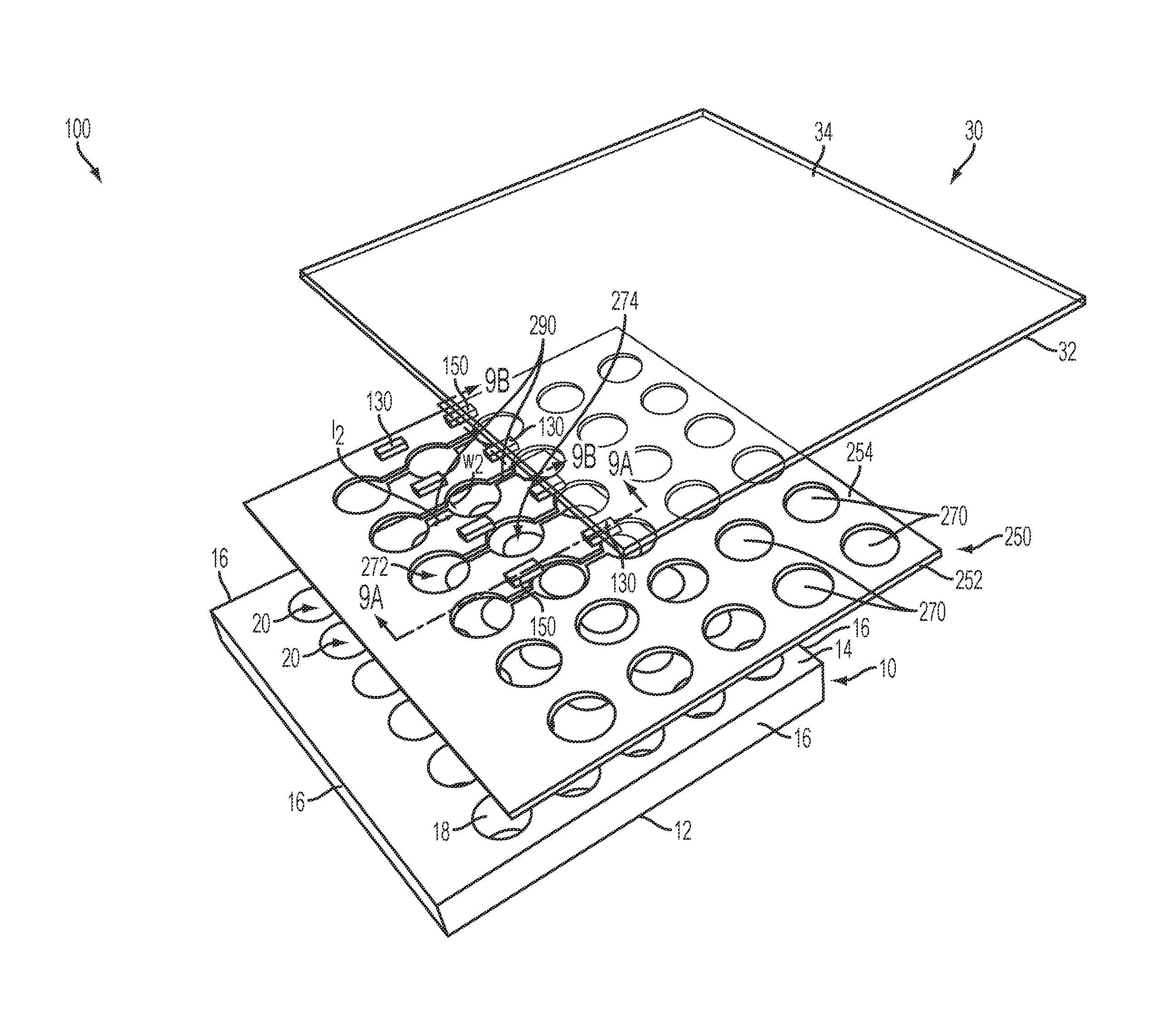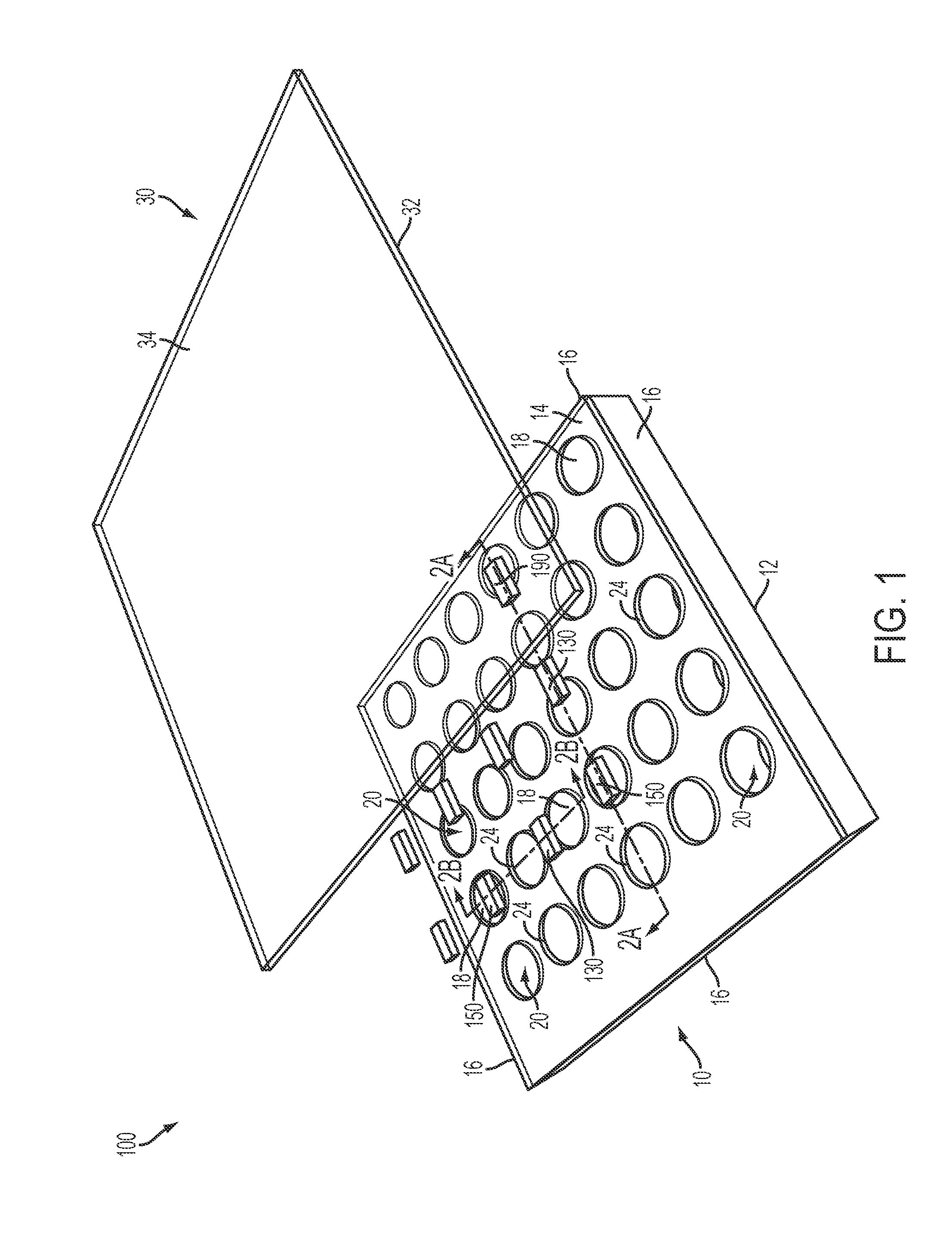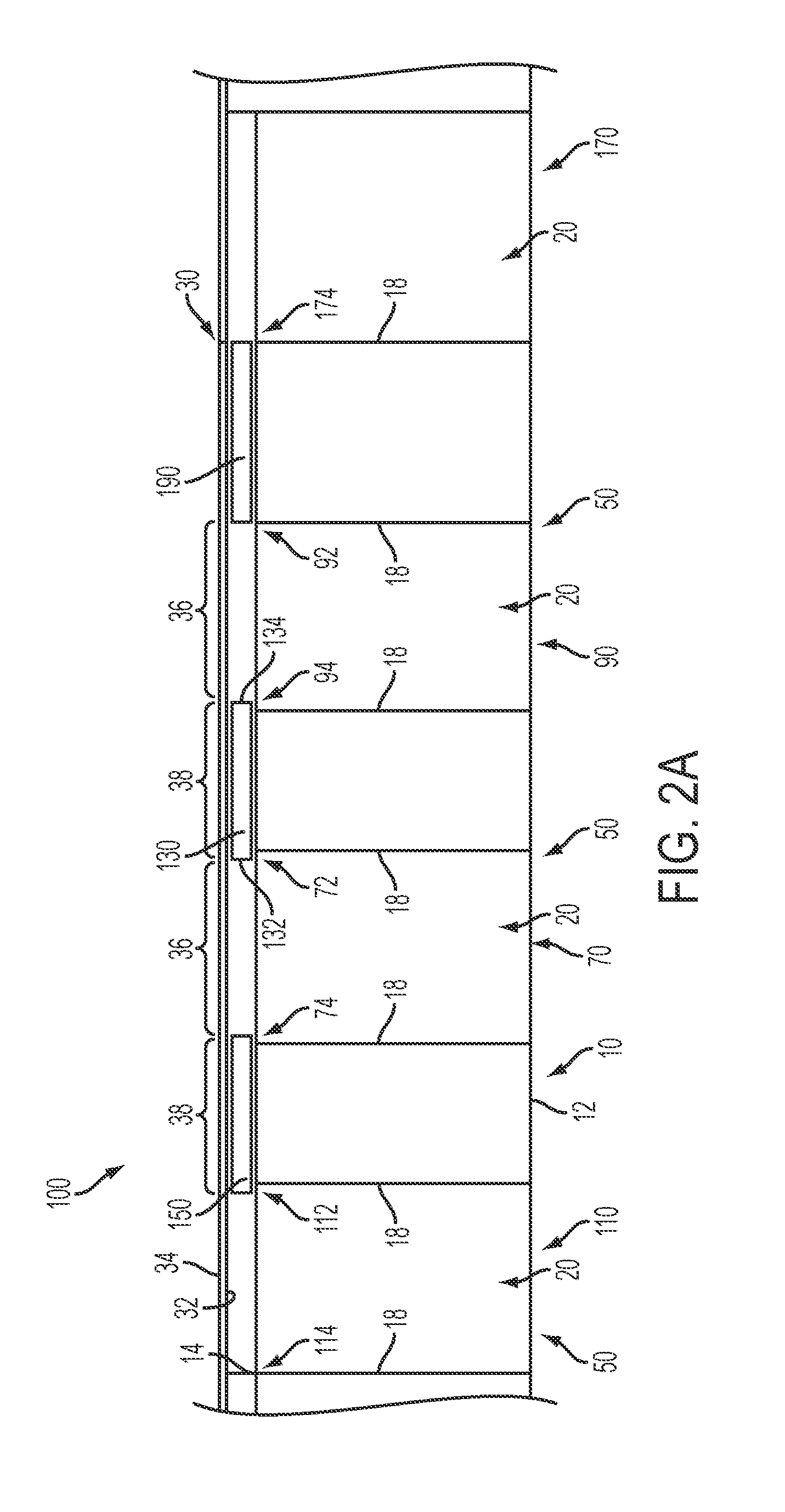Automatic continuous perfusion cell culture microplate consumables
a microplate and continuous perfusion technology, applied in the field of microplates, can solve the problems of affecting the perfusion rate, affecting the health of cells, and removing healthy cells from wells,
- Summary
- Abstract
- Description
- Claims
- Application Information
AI Technical Summary
Benefits of technology
Problems solved by technology
Method used
Image
Examples
example 1
Perfusion Microplate Assembly and Flow Characterization
[0099]Experimental Protocol.
[0100]Flow dynamics between connecting source, sample, and waste wells in a perfusion microplate were studied by monitoring fluorescent signals in the source, sample and waste wells. The effect of the dimensions of filter paper strips employed in the perfusion microplate was also studied using two different widths of filter paper strips, e.g. 810 μm and 320 μm.
[0101]The perfusion microplates employed in these studies were assembled by manually cutting pieces of filter paper strips, applying an adhesive to a well frame, curing the adhesive, attaching the filter paper strips onto the cured adhesive, and attaching a polystyrene film to the well frame. More specifically, the perfusion microplates employed in these studies were assembled by manually cutting pieces of filter paper strips from a 110 mm diameter filter paper (Catalog No. 1450-110, Whatman Inc., Piscataway, N.J.). The filter paper strips had t...
example 2
C3A Cell Culture
[0111]Experimental Protocol.
[0112]C3A cell viability of C3A cells cultured in conventional static microplates without medium exchange, cultured in conventional static microplates with medium exchange, and cultured in a perfusion microplate were studied. Perfusion microplates were prepared as previously described in Example 1, employing a filter paper strip with the dimensions 590 μm in width, 115 μm in thickness, and 3.5 mm in length (hereinafter “the 590 μm strip”).
[0113]With respect to C3A cell preparation, cryopreserved C3A cells, a derivative of HepG2 / C3A human hepatoblastoma cell line (CRL-10741™, American Type Culture Collection, Manassas, Va.) were thawed and cultured in a sterile cell culture flask (Product #430641, Corning Incorporated, Corning, N.Y.) in Eagle's Minimum Essential Medium (hereinafter “EMEM”) (ATCC® No. 30-2003, ATCC, Manassas, Va.) supplemented with 10% fetal bovine serum (Catalog No. 16000-077, Invitrogen Corporation, Carlsbad, Calif.) and 1...
example 3
Cell-Cell Communication Between LADMAC and EOC 20 Cells
[0119]Experimental Protocol.
[0120]Cell-cell communication between LADMAC and EOC 20 cells employing conventional static microplates and perfusion microplates was studied. Perfusion microplates were prepared as previously described in Example 1, employing the 590 μm strip.
[0121]With respect to LADMAC conditioned medium preparation, LADMAC cells are a transformed cell line derived by transfecting mouse bone marrow cells highly enriched for macrophage progenitors after transfection with human cellular myc-homologous DNA sequences in the pBR325 plasmid (pR myc) and secrete the human growth factor colony stimulation factor 1 (hereinafter “CSF-1”). CSF-1 is capable of supporting the in vitro proliferation of mouse bone marrow macrophages. The LADMAC cell line (CRL-2420™, ATCC, Manassas, Va.) is used to produce the CSF-1 containing LADMAC conditioned medium which will support the growth of the macrophage cell lines EOC 2 (CRL-2467™), E...
PUM
| Property | Measurement | Unit |
|---|---|---|
| length | aaaaa | aaaaa |
| length | aaaaa | aaaaa |
| thickness | aaaaa | aaaaa |
Abstract
Description
Claims
Application Information
 Login to View More
Login to View More - R&D
- Intellectual Property
- Life Sciences
- Materials
- Tech Scout
- Unparalleled Data Quality
- Higher Quality Content
- 60% Fewer Hallucinations
Browse by: Latest US Patents, China's latest patents, Technical Efficacy Thesaurus, Application Domain, Technology Topic, Popular Technical Reports.
© 2025 PatSnap. All rights reserved.Legal|Privacy policy|Modern Slavery Act Transparency Statement|Sitemap|About US| Contact US: help@patsnap.com



